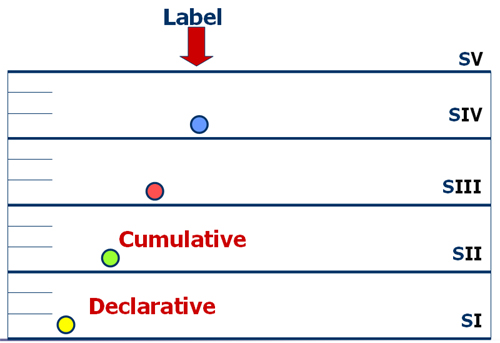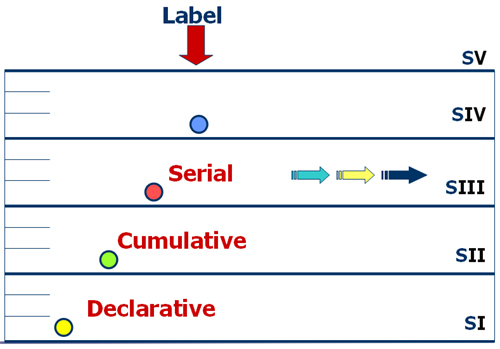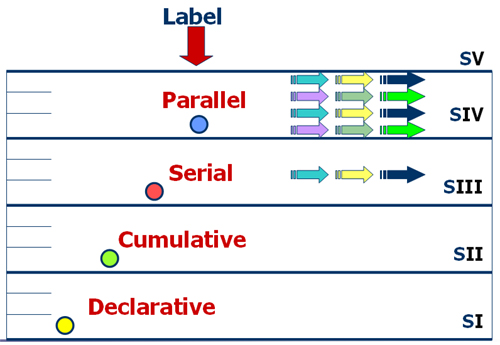Elliott characterized the differences in cognitive thinking patterns using the analogy of water and its changes to ice and steam based on discrete temperature changes. At 33F degrees, water is still water, but at 32F, water turns to ice, changes state from a liquid to a solid. At 200F degrees, water is still water, but at 212F, water turns to steam, from a liquid to a gas. Elliott observed the differences in cognitive thinking patterns between Strata I, II, III and IV to be as discrete and different as ice is to water is to steam. And the changes in state occur at very specific temperatures, very specific Time Spans.
A Declarative State of Mind
Elliott labeled Stratum I as a Declarative state. “I do declare,” would be the mantra. Perhaps not much evidence to back up the logic of the argument, but still a strongly held opinion. You might hear things stated “Well, it’s either this possibility, or this possibility, or this possibility. I don’t know, pick one. If that one doesn’t work, pick another.” The cognitive thinking pattern at Stratum I, he labeled Declarative.
Stratum II – Cumulative
Stratum II, he called Cumulative. In conversation, Elliott observed that people in Stratum II could accumulate separate pieces of information and assemble them together to support their argument. It might sound like this, “Faced with this problem, I can see this as part of the solution, and this as part, and this as part. If I put them all together, I can solve the problem.” The cognitive thinking pattern at Stratum II, he labeled Cumulative.
The Ten Minute Conversation
You see, Elliott had the ability to talk with someone about a subject in which they had high interest, and after ten minutes be able to accurately identify their cognitive thinking pattern, according to the logic of their argument. He did this, using language analysis, by virtue of his academic and professional training as a psychologist. You can only imagine how handy that skill might be to any manager.
Stratum III – Serial Processing
Listening to a Stratum III logical argument, Elliott was able to detect the first underpinnings of cause-and-effect thinking. “If this is the case, then this must be the result.” While Stratum II is territory of the supervisor, Stratum III is the first level of true management thinking. The cognitive thinking pattern at Stratum III, he labeled Serial, describing a chain of cause-and-effect elements in a single Serial process.
Stratum IV – The Parallel Thinker
In Stratum IV, Elliott listened for multiple serial processes, which he described as Parallel thinking. Not simply multi-tasking, but truly understanding the interdependence of each serial process with another. Understanding the contingencies, the constraints, where multiple conditions must occur to create the desired result. Parallel thinking.






I would like to receive emails on your info. Thanks, Mike